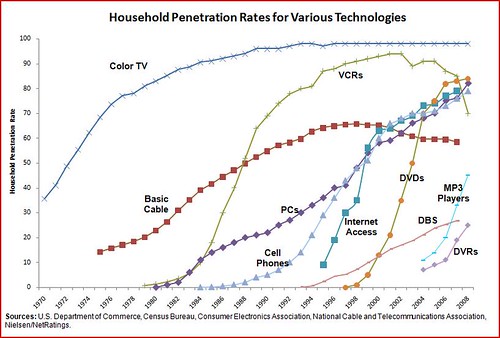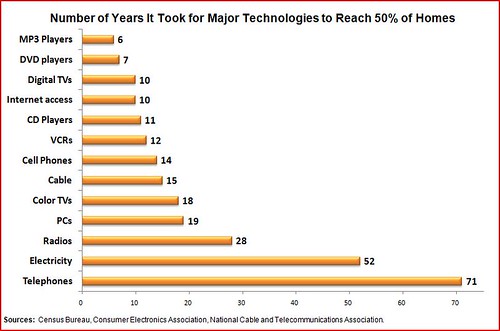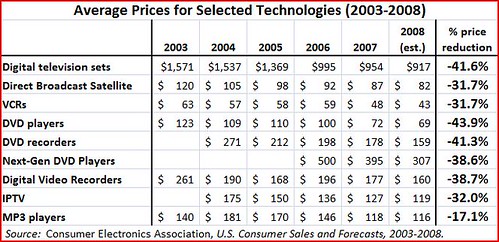In the first installment in this series, I outlined the new project “Media Metrics†project I have undertaken to evaluate the true state of America’s media marketplace. To reiterate: I want to use solid evidence to assess where we stand today relative to the past in terms of media choice, competition, and diversity.
In this brief second installment, I want to provide a quick snapshot of where we stand in terms of household access to various media and communications technologies. Some critics like to wax nostalgic about a mythical golden age of media in the past when the citizenry was supposedly far better informed and more engaged in deliberative democracy.
It’s all poppycock. The fact is that we are better informed as a society today than all of our ancestors were combined. To the extent there ever was a Golden Age of Media, it is now; we are living in it. Richard Saul Wurman, author of Information Anxiety, has noted that “A weekday edition of the New York Times contains more information than the average person was likely to come across in a lifetime in seventeenth-century England.†And a 1987 report by Susan Hubbard (Information Skills for an Information Society: A Review of Research) estimated that more new information has been produced within the last 30 years than in the last 5,000. And did you know that in 1900, the average newspaper had only 8 pages, according to Benjamin Compaine, co-author of Who Owns the Media? In the year 2000, by contrast, according to the Encarta encyclopedia, “Daily general-circulation newspapers average[d] about 65 pages during the week and more than 200 pages in the weekend edition.†I could go on all day with stats and comparisons like this.
Part of the reason we are better informed, quite obviously, is simply because we have access to more media services and technologies with each passing year. Exhibit 1 illustrates that fact.
Exhibit 1

Importantly, new media and communications technologies are spreading throughout society faster with each passing year. Exhibit 2 illustrates how many years it took for various media technologies to reach 50% of American homes. (And, just as a point of reference, I included telephones and electricity on the chart).
Exhibit 2

The newer the technology, the more rapidly people are getting it. This is because of: (1) the growing affluence of the American citizenry; (2) many of the these technologies build upon other media and communications technologies; and (3) competition and innovation is rapidly bringing down prices of various media technologies and communications gadgets. Exhibit 3 illustrates this point.
Exhibit 3

Again, things are getting better all the time!
[Up next… In part 3, I’ll examine the heated competition among various media sectors for advertising support.]
